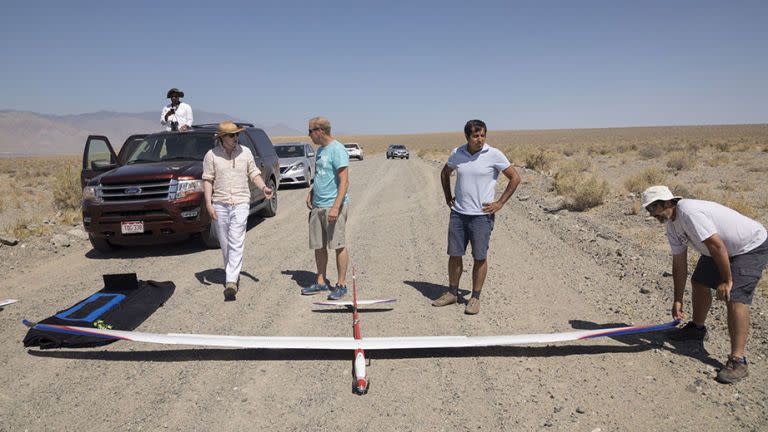These AI Gliders Hunt for Updrafts to Fly Forever

"Hearst Magazines and Yahoo may earn commission or revenue on some items through these links."
Microsoft is working on an autonomous glider that aims to replicate the patterns of birds. The hope is that if these gliders can learn enough from our feathered friends, they can fly basically forever and turn into node for wide-ranging wireless internet.
The company is trying to replicate what buzzards, falcons, hawks and other birds can do naturally: locate moving warm pockets of air called thermals and glide. "Birds do this seamlessly, and all they're doing is harnessing nature. And they do it with a peanut-sized brain," says Ashish Kapoor, a principal researcher at Microsoft, in a recent company blog post.
Kapoor and his team test out their gliders in the Nevada desert, 130 miles south of Reno. There, they work on a AI algorithms that identify things like wind direction, air temperature, and areas (like fires) where a glider is not allowed to fly. Using a Markov decision process, the Microsoft team is working to eliminate uncertainty with each glide. After it finds one thermal, of course, it has to begin predicting and analyzing where the next will be.
This sort of uncertainty is different than what AIs encounter in the various games they learn to master: Go, chess, Mortal Kombat. Those games are bound by rules far more predictable than wind. While nature has its own laws, they're not written down or programmed by anyone. While birds have peanut-sized brains, they've been riding thermals for thousands of years. It's not just second nature, it is nature.
Microsoft has embraced several outside-the-box solutions towards its goal of furthering internet availability. Most recently, the Redmond, Washington-based company has announced a major initiative with the goal of using TV frequencies to make high speed internet available in rural areas. It's just a question of what can work first.
Source: New York Times
You Might Also Like

